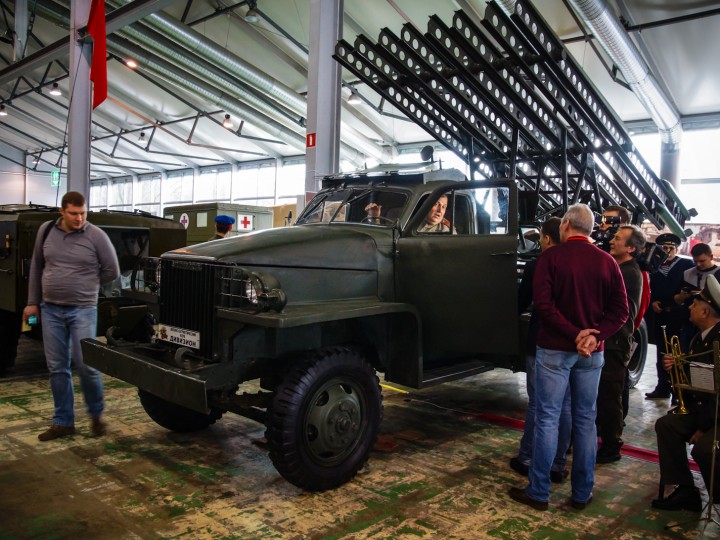1943 Studebaker US-6 BM-13
The truck-mounted Katyushas were installed on ZiS-6 6×4 trucks, as well as the two-axle ZiS-5 and ZiS-5V. In 1941, a small number of BM-13 launchers were mounted on STZ-5 artillery tractors. A few were also tried on KV tank chassis as the KV-1K, but this was a needless waste of heavy armor. Starting in 1942, they were also mounted on various British, Canadian and U.S. Lend-Lease trucks, in which case they were sometimes referred to as BM-13S. The cross-country performance of the Studebaker US6 2½ ton truck was so good that it became the GAU's standard mounting in 1943, designated BM-13N (normalizovanniy, 'standardized'), and more than 1,800 of this model were manufactured by the end of World War II. After World War II, BM-13s were based on Soviet-built ZiL-151 trucks.









